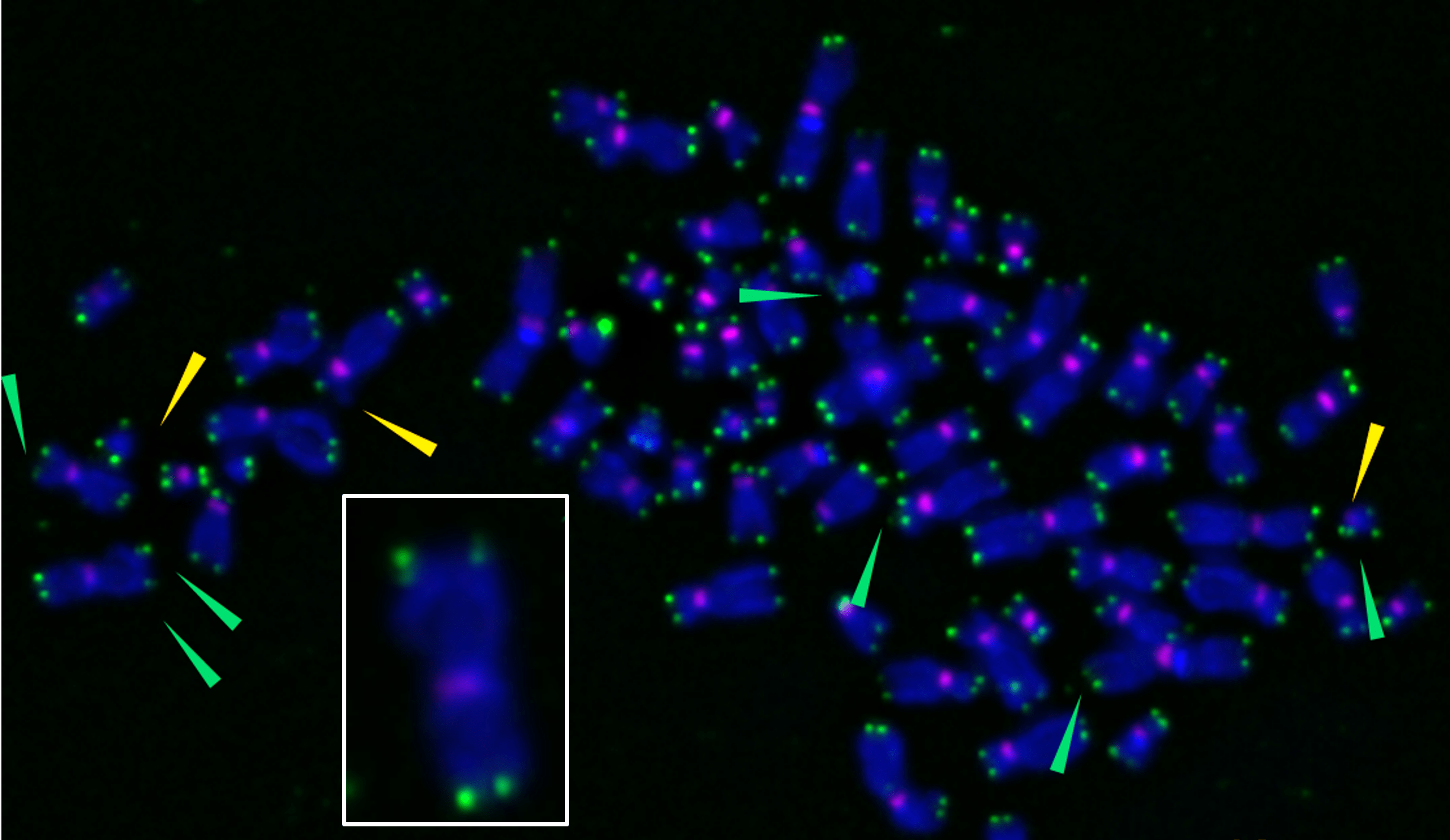
Senescent cells — those that have lost the ability to divide — accumulate with age and are key drivers of age-related diseases, such as cancer, dementia and cardiovascular disease. In a new study, a team led by University of Pittsburgh and UPMC Hillman Cancer Center researchers has uncovered a mechanism by which senescent, or “zombie,” cells develop.
Published today in Nature Structural & Molecular Biology, the study shows for the first time that oxidative damage to telomeres — the protective tips of chromosomes that act like plastic caps at the end of a shoelace — can trigger cellular senescence. These findings could eventually point to new therapeutics that promote healthy aging or combat cancer.
“Zombie cells are still alive, but they can’t divide, so they don’t help replenish tissues,” said senior author Patricia Opresko, Ph.D., professor of environmental and occupational health and of pharmacology and chemical biology at Pitt. “Although zombie cells don’t function properly, they’re not couch potatoes — they actively secrete chemicals that promote inflammation and damage neighboring cells. Our study helps answer two big questions: How do senescent cells accumulate with age, and how do telomeres contribute to that?”
When a healthy human cell divides to form two identical cells, a small piece of DNA is shaved off each chromosome’s tip, so that telomeres become gradually shorter with each division. However, it remains unclear whether over a person’s lifetime, a cell may divide so often that its telomeres erode completely, prompting transition to a zombie-like state. Researchers have known for decades that telomere shortening triggers senescence in lab-grown cells, but they could only hypothesize that DNA damage at telomeres could turn cells into zombies.
Until now, testing this hypothesis had not been possible because the tools used to damage DNA were non-specific, causing lesions across the whole chromosome.
“Our new tool is like a molecular sniper,” explained first author Ryan Barnes, Ph.D., a postdoctoral fellow in Opresko’s lab. “It creates oxidative damage exclusively at the telomeres.”
To develop such marksman-like precision, the team used a special protein that binds exclusively to telomeres. This protein acts like a catcher’s mitt, grabbing hold of light-sensitive dye “baseballs” that the researchers tossed into the cell. When activated with light, the dye produces DNA-damaging reactive oxygen molecules. Because the dye-catching protein binds only to telomeres, the tool creates DNA lesions specifically at chromosome tips.
Using human cells grown in a dish, the researchers found that damage at telomeres sent the cells into a zombie state after just four days — much faster than the weeks or months of repeated cell divisions that it takes to induce senescence by telomere shortening in the lab.
“We found a new mechanism for inducing senescent cells that is completely dependent on telomeres,” explained Opresko, who also co-leads the Genome Stability Program at UPMC Hillman. “These findings also solve the puzzle of why dysfunctional telomeres are not always shorter than functional ones.”
Sunlight, alcohol, smoking, poor diet and other factors generate reactive oxygen molecules that damage DNA. Cells have repair pathways to patch up DNA lesions, but, according to Opresko, telomeres are “exquisitely sensitive” to oxidative damage. The researchers found that damage at telomeres disrupted DNA replication and induced stress signaling pathways that led to senescence.
“Now that we understand this mechanism, we can start to test interventions to prevent senescence,” said Barnes. “For example, maybe there are ways to target antioxidants to the telomeres to protect them from oxidative damage.”
The findings could also inform the development of new drugs called senolytics that home in on zombie cells and kill them.
“By reducing the accumulation of zombie cells, which contribute to degenerative diseases, we might be able to promote healthspan — the length of time that a person is healthy,” he added.
Other authors who contributed to the study were Mariarosaria de Rosa, Ph.D., Sanjana A. Thosar, M.S., Ariana C. Detwiler, M.S., Vera Roginskaya, B.S., Bennett Van Houten, Ph.D., and Jacob Stewart-Ornstein, Ph.D., all of Pitt and UPMC, and Marcel P. Bruchez, Ph.D., Carnegie Mellon University.
This research was supported by the National Institutes of Health (F32AG067710-01, K99ES033771, R35ES030396, R01CA207342 and R01EB017268), the Glenn Foundation for Medical Research, the UPMC Hillman Cancer Center Cytometry Facility (P30CA047904) and the UPMC Hillman Cancer Center Postdoctoral Fellowship for Innovative Cancer Research. https://www.upmc.com/media/news/063022-zombie-cells?fbclid=IwAR2TYYpyDFL-yi6HTr_Rz6cGlGuG7owr34RjiTFB-ATOhSOQBqB0dkAmsJ0








Recent Comments